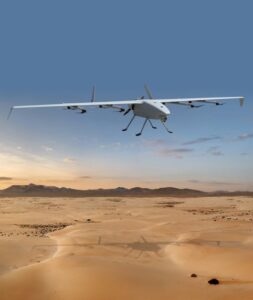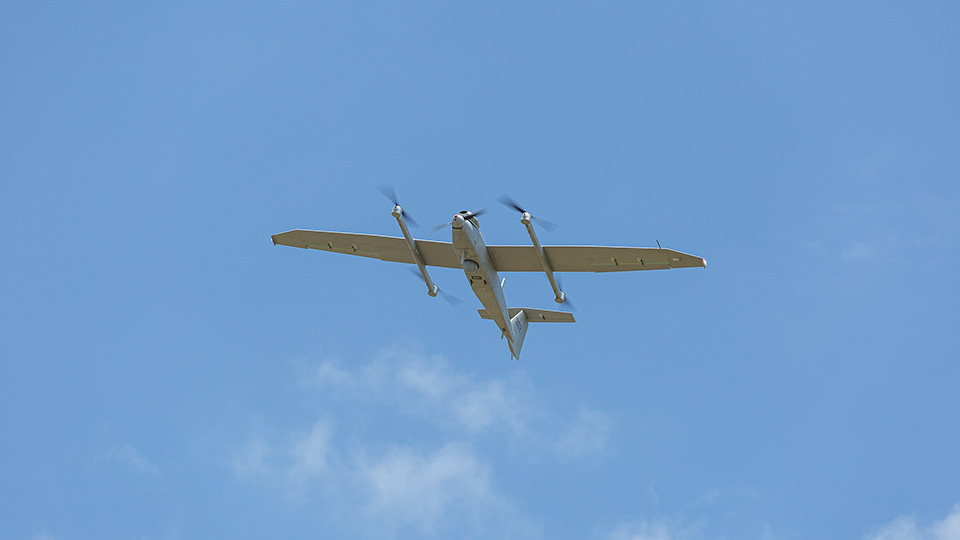The US Army awarded five rapid prototyping other transaction agreements (OTAs) under the Future Tactical Unmanned Aircraft System (FTUAS) Increment 2 (Inc 2) effort on 27 February 2023, awarding the OTAs to AeroVironment Inc, Griffon Aerospace, Northrop Grumman, Sierra Nevada Corporation (SNC), and Textron Systems.
The awards are based on the results of a competitive evaluation and vary from around USD 1 M (EUR 0.92 M) to USD 25 M, depending on how far the contenders progress through the base and option contract periods.
FTUAS is the US Army’s premier vertical take-off and landing (VTOL) unmanned aircraft system (UAS) modernisation effort. The FTUAS Inc 2 effort will replace the US Army’s long-serving RQ-7B Shadow tactical UAS, which first entered production in 2004.

For the FTUAS inc 2 effort Aerovironment is pitching its Jump 20; Griffon Aerospace is offering its its tilt-rotor eVTOL; Northrop Grumman is offering an enhanced-capability version of the V-BATproduced by its FTUAS partner Shield AI; SNC is offering the Voly-T; and Textron Systems, manufacturer of the RQ-7, is offering its Aerosonde Hybrid Quad UAS.

Requirements under FTUAS Inc 2 include runway independence, point take-off and landing, and a rapidly deployable UAS capability. According to the army, the fielding of FTUAS Inc 2 will provide a distinct tactical advantage over current systems due to its increased manoeuvrability through VTOL, improved command and control supported by an on-the-move (OTM) capability, a reduced transportation and logistics footprint, as well as significantly improved survivability due to reduced noise signature. The capability is intended to improve a brigade combat team’s ability to conduct reconnaissance and surveillance operations that gather actionable intelligence about the enemy in degraded Global Positioning System environments.
The FTUAS Inc 2 programme will leverage lessons learned from previous efforts, including a prior year-long FTUAS demonstration, to field a FTUAS meeting the requirements of the Army Abbreviated Capabilities Development Document (A-CDD). It will also continue to inform the doctrine, organisation, training, materiel, leadership, personnel, facilities, and policy requirements leading to a follow-on production and fielding effort.

The FTUAS Inc 2 effort consists of five distinct phases: a seven-week base development period and then four optional periods occurring between 2023 and 2025.
As noted by the army in its press release, the FTUAS rapid-prototyping effort will exploit model-based systems engineering and other digital engineering techniques to implement the government’s Modular Open Systems Approach (MOSA), which in turn enables FTUAS Inc 2 to maintain alignment with the army’s UAS Family of Systems and higher-level system architectures. According to the US Army, the FTUAS Inc 2 effort “promotes robust competition and innovation to achieve A-CDD requirements and support the Army decision for a program of record system”.

After a series of design reviews in the Base, Option 1 and Option 2 periods, the companies remaining in the contest will demonstrate their capabilities through to flight demonstrations and third-party MOSA verification activities in the Option 3 period.
Companies remaining after that will proceed to the Option 4 period, in which they will each deliver four air vehicles, mission system packages, payload packages, ground controllers, and two OTM controllers, all required maintenance tools and manuals, and all necessary ground support equipment for qualification testing and operational assessment.

These systems will undergo numerous evaluation activities such as environmental testing, electromagnetic environmental effects testing, MOSA verification, and flight qualification testing conducted at both company and government test facilities.
The Aviation and Missile Technology Consortium released the FTUAS Inc 2 Request for White Papers on 1 October 2021. The Program Executive Office (PEO) Aviation FTUAS team subsequently conducted a technical evaluation of the submissions in preparation for today’s rapid prototyping awards.
Peter Felstead


